1. District Monitoring Update
Federal Pandemic Relief funds (totaling $1.7 billion) are significant public investments, and both the United States Department of Education and Oregon’s Secretary of State expects ODE to monitor the use of the funds to ensure that districts are utilizing the ESSER funds in accordance with federal and state regulations.
ODE will monitor districts to ensure:
-
Districts are complying with LEA Assurances for the ARP ESSER Fund, and
-
ODE learns from districts regarding their successes and challenges associated with the implementation of programs, activities, and projects funded through ESSER.
Desk monitoring will be the primary method used by ODE in the monitoring of districts. These desk audits will occur twice each school year, in the fall and spring. For fall 2023, 20 districts were notified in mid-August with the goal to complete the monitoring process by mid-December. To learn more about the monitoring and district selection process, please visit the ODE ESSER webpage by clicking here.
2. Participation Data Collection Reminder
As a reminder, starting with last school year (2022-23), districts should be collecting student participation data if implementing the following ESSER-funded activities:
-
Summer School or Enrichment
-
Extended Instruction Time
-
After School Programs
-
High-Dose Tutoring
-
Early Childhood Education
-
Student use of ESSER-Purchased Education Technology
ODE is offering districts the option to report this data via SSID numbers or by aggregate demographic data. Data for the 2022-23 year will be collected within the ESSER Annual Reporting in the spring.
Funds must be spent by 9/30/23 (for ESSER II) or 9/30/24 (for ESSER III). We encourage districts to start capital expenditure projects as soon as possible due to continued materials and labor shortages. If you have a capital expenditure project that you expect to go beyond the above dates, please contact us immediately.
A few ideas for expenditures that qualify for unfinished learning might include expenses towards textbooks, library books/materials, technology replacements/updates, early learning supplies, assistive technology products (hearing aids, screen readers, OT desks, etc.), consumable supplies and materials for classrooms, expenses on counseling centers, calming centers, health centers and after school programs, enrichment materials, Positive Behavioral Interventions and Supports (PBIS) incentives, and FTE for staff. These could all be utilized as part of a district’s plan to address unfinished learning.
*Correction to Prior Newsletter Sent on September 21, 2023: ODE will accept reimbursement requests for ESSER II funds through November 14, 2023. All expenses must have been properly obligated and expended by September 30, 2023.
|
|
ESSER II
|
ESSER III
|
|
(CRRSA Act)
|
(ARP Act)
|
|
Award Period
|
03/13/20 - 09/30/22
|
03/13/20 - 09/30/23
|
|
Deadline for Final Spending (with Tydings Extension)
|
9/30/2023
|
9/30/2024
|
|
Deadline for Claiming Funds in EGMS and Filing Reimbursement
|
November 14, 2023
|
November 14, 2024
|
4. ESSER Integrated Planning Tools (IPTs) Update
Districts are required to continuously update their ESSER III Integrated Planning Tools (IPTs) as they plan and invest in activities to support students and staff. Keeping these plans up to date is a great way to ensure that ODE, your school board, and the community know the district’s plans for these funds. Please note that any updates to the IPT must include plans to spend at least 20% of the ESSER III funds on a district’s unfinished learning activities.
Expenses towards textbooks, library books/materials, technology replacements/updates, early learning supplies, assistive technology products (hearing aids, screen readers, OT desks, etc.), consumable supplies and materials for classrooms, expenses on counseling centers, calming centers, health centers and after school programs, enrichment materials, Positive Behavioral Interventions and Supports (PBIS) incentives, and FTE for staff could all be utilized as part of a district’s plan to address unfinished learning. Please see the ESSER III Eligible Uses of Funds document for the complete list of eligible uses.
When district IPTs are updated – please post the updated version to this folder and your district’s website.
If your district needs support to update its IPT – please feel free to reach out to the ODE ESSER team via email: ODE.ESSER@ode.oregon.gov
5. District ESSER Communications Toolkit
Districts have worked hard to think both creatively and strategically about how to best invest their Elementary and Secondary School Emergency Relief (ESSER) funds. We appreciate how schools are tailoring their expenditures to support students based on local needs and community engagement across our state. Now, as we close out the final year of ARP ESSER III funding, is the time to tell the story of how this funding has been used to help address unfinished and accelerated learning, return to in-person instruction, and take action to bolster the social and emotional needs of both the children and the adults in our schools.
We’ve designed this District ESSER Communications Toolkit to help school districts communicate about how they used their ESSER funds to address their immediate needs and to position their community for long-term wellness and academic success. This toolkit contains templates, draft language, and ideas for districts to communicate effectively with key audiences, including students, families, staff, and other education partners. These resources include:
-
Overall guidance on engagement and communication
-
Suggested social media postings
-
Press release template
-
Sample ESSER information slides
-
Prompt for creating short video segments to share on social media or websites
-
Additional resources
District leaders are encouraged to customize and/or use any of the ideas, language, and visuals included in the toolkit to supplement their local messaging or to jumpstart a new outreach effort. For additional resources or for support with telling your local stories, please contact Kristin Bigler, Oregon Department of Education, Public Affairs Specialist, kristin.bigler@ode.oregon.gov.
We are excited to highlight one of the 12 projects Oregon has designated as an ESSER III Set-Aside Investment below. Narratives about Oregon’s full plan for the state’s allocation of ESSER III Set-Aside funds.
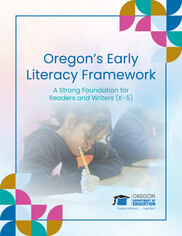 |
|
Key ESSER III Investment #7:
K-5 Literacy Investment $4 Million
|
State Grants Revitalize Rural School Libraries
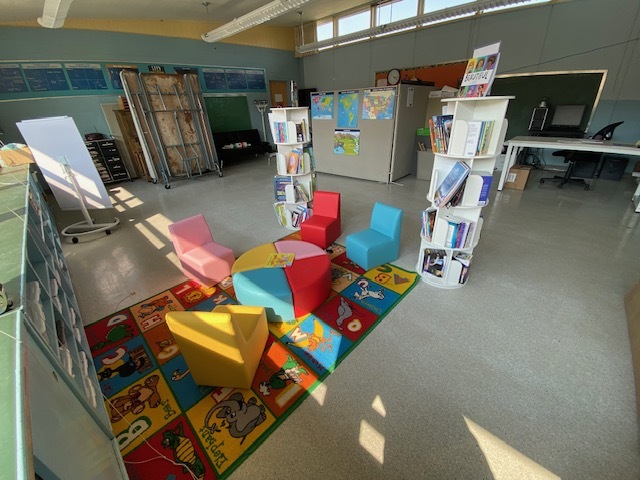 K-3 reading nook area at Ashwood School District realized with the ESSER III rural library revitalization grant. The design and layout were based upon the ideas of a 4th-grade student at the school.
The Oregon Department of Education (ODE) is awarding grants to 86 school districts across Oregon to support the revitalization of their school libraries. Funding for this grant program comes from the state’s investment of pandemic recovery funds as part of the Elementary and Secondary School Emergency Relief (ESSER) III funding from the American Rescue Plan of 2021.
The $10,000 grants are intended for rural school districts that are small and have large numbers of families navigating poverty, in alignment with the ESSER III investment focus on historically excluded communities disproportionately impacted by the pandemic. Districts will have through the end of the 2023-24 school year to spend the grant funds on books, staff time to process new books, and updated furnishings to improve the appeal and accessibility of the school library spaces.
Marion Shuening, a librarian and para-educator at Pilot Rock School District in Umatilla County, said of the grant program, “I am so excited to be able to use this for the students and get them back to reading and enjoying different books.”
Districts will use the funds to expand the diversity of voices and perspectives in their school library collections. Grant-purchased books will support one or more equity, diversity, inclusion, and reading engagement goals. These could range from hi-lo books for striving readers to materials in Spanish to audiobooks for greater accessibility. The books purchased could also be stories with characters or by authors that reflect the demographics of the school’s student population and books as windows to cultures that are not typically or equally represented in the student population.
Oregon’s School Library Revitalization Grants help advance the state’s commitment to strengthening literacy learning for all students, especially rural Oregonians.
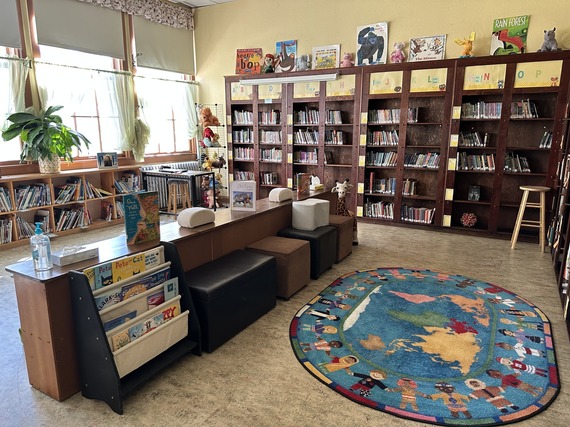 Pinehurst Elementary school is already checking out books to students in a newly renovated space using their rural library grant funds.
Share Your ESSER III Success Stories with ODE!
What are some innovative things districts are doing with their ESSER funds? Every quarter, we will highlight promising and creative activities that have the potential to impact student outcomes.
This issue features ADA playground updates. Several school districts, including Port Orford, Phoenix-Talent, Yoncalla, Cascade, Glide, South Umpqua, La Grande, Clatskanie, and Dayton, used ESSER funds to increase accessibility for all students. This issue features the playground at Clatskanie Elementary School, which now has 150 students or more enjoying the features.
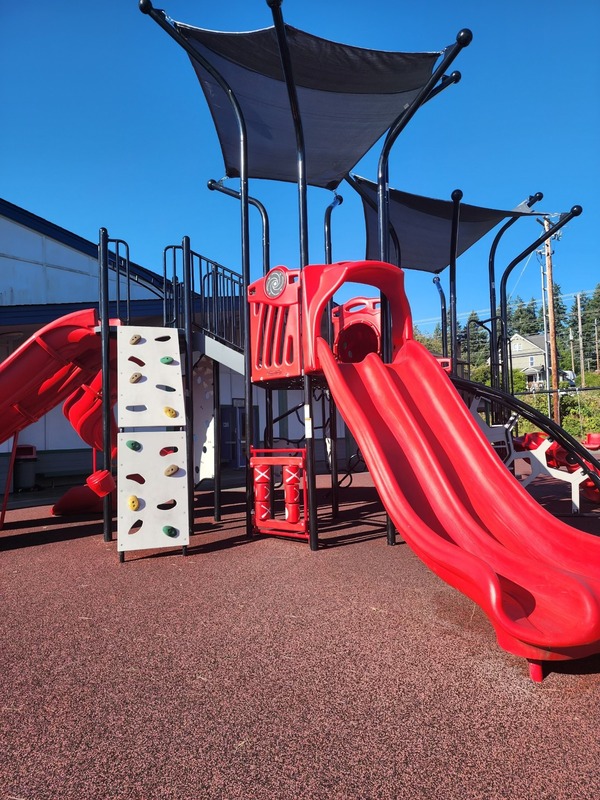 Main play structure at Clatskanie with ADA approved features.
With the ESSER grant money, Clatskanie Elementary School purchased a large play structure that is accessible for students who have special needs. In addition, it is a perfect structure for our smaller students at Clatskanie Elementary School. Kindergarten to Second Grade is housed in the building adjacent to the structure. As a result, approximately 150+ students have access to the play area daily. It has multiple slides, a climbing area that is more readily accessible for all students, and other interactive components that we will add to as finances allow. There is also a swing set that has a special seat so that students with ADA needs can swing safely. The structure was completed with community help during Spring Break, 2022. It was an arduous task, but it was wonderful to have so many people dedicated to the students’ benefit. It was opened to students in the fall of 2022 once the special padding was added for safety. Since that time, students have enjoyed the apparatus daily during school hours. It is also a community resource as there is access after-hours.
Submitted by Clatskanie Elementary School Principal Kara Burghardt.
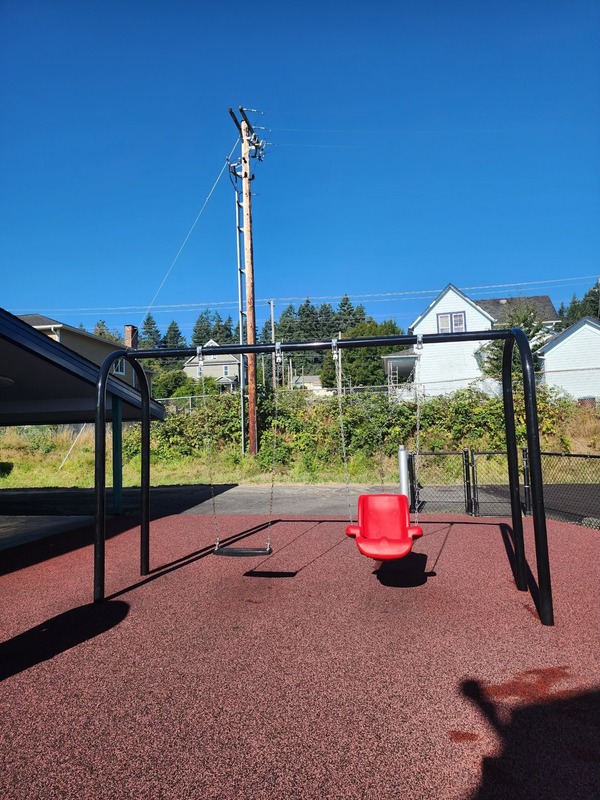 Accessible play swing has become a popular addition to the Clatskanie Elementary School.
Use of the Elementary and Secondary School Emergency Relief Funds in Oregon
Since 2020 Oregon has received $1.62 billion in Elementary and Secondary School Emergency Relief (ESSER) Funds to support the needs of all students, with a focus on historically excluded communities disproportionately impacted by the pandemic. The state has allocated 90% of its allotment to school districts to spend based on their community’s unique needs. ODE has distributed the other 9.5% (.5% can be used for administrative costs) to support 12 equity-driven initiatives designed to address unfinished learning, support the health, safety, and mental wellness of our students and staff, and strengthen high-quality, culturally-sustaining instruction and leadership. These initiatives are designed for all students and are specifically centered on equitably serving Oregon’s Black, Latino, Latina, Latinx, Indigenous, Asian, Pacific Islander, and Tribal students, students with disabilities, students who identify as LGBTQ2SIA+; emerging bilingual; and those navigating foster care, houselessness, and poverty, and those with limited access to resources due to rural location.
We send out newsletters on a quarterly basis, so keep an eye out to stay up to date on ESSER III information.
|